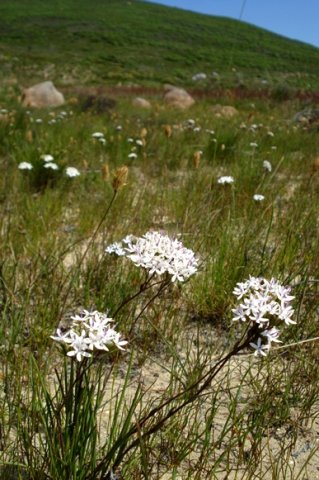Corymbium

Author: Ivan Lätti
Photographer: Judd Kirkel Welwitch
Corymbium is a genus of stemless, tufted perennials in the Asteraceae or daisy family. The plants are commonly known as plampers and in Afrikaans as heuningbossies (little honey bushes). The plants grow from fibrous rhizomes, often retaining the bases of old leaves.
The strap-shaped, broadly lance-shaped, sword-shaped or linear leaves are basal with parallel veins that may be prominent. This makes these plants resemble monocots when not in flower. The leaves are sometimes softly hairy, often silky and brown at the base, their margins entire. Leaf texture may be cartilaginous, leathery or herbaceous.
The inflorescences comprising many flowerheads each may be shaped as flat-topped corymbs, panicles or racemes. Each head consists of a single, bisexual disc floret and no rays. The spindle-shaped involucres consist of two rows of hairless or roughly textured bracts. The upper two bracts sheathe the floret. There are no scales on the receptacles.
The salver-shaped corollas have short tubes, each with five lobes that are longer than the tubes, coloured mauve, pink or white. The lobes may be oblong, linear or ovate, straight-tipped or curving. The anthers are shortly arrow-shaped and connect at the base. The exserted styles are cylindrical, hairy and two-lobed at their tips. Flowering is best in the first season after fire.
Each achene-like, dry fruit bears a single seed, its pappus short, bristled and crown-like.
There are nine Corymbium species, all found in South African fynbos. The plant in picture is Corymbium villosum (Leistner, (Ed.), 2000; Vlok and Schutte-Vlok, 2015; Manning, 2007; Wikipedia).

